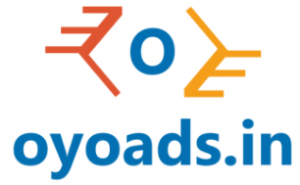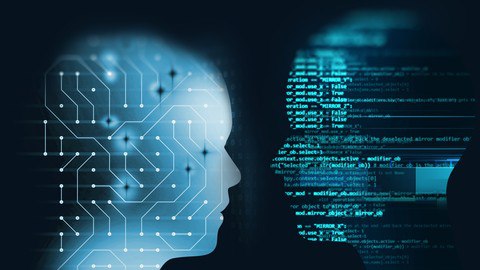What you’ll learn
Variables and datatypes
operators
tuples
sets
dictionary
and much much more
What you’ll learn
Variables and datatypes
operators
tuples
sets
dictionary
and much much more
Curriculum
5 sections • 153 lectures • 45h 2m total length
Expand all sections
Introduction
Introduction
spyder
spyder part 2
variables and data types
operators
Section 2
This course includes:
45 hours on-demand video
Full lifetime access
Access on mobile and TV
Certificate of completion
Requirements
Description
Welcome to this course on Python for Data Science. This is a 4 week course we are
going to teach you some very basic programming aspects in python. And since this is a
course that is geared towards data science towards another course based on what has
been taught in the course, we will also show you two different case studies one is what
we call as a function approximation case study another one a classification case study.
And then tell you how to solve those case studies using the programming platform that
you have learned. So, in this first introductory lecture I am just going to talk about why
are we looking at python for data science.
(Refer Slide Time: 01:10)
So, to look at that first we are going to look at what data science is. This is something
that you would have seen in other videos of courses in the NPTEL in other places. Data
science is basically the science of analyzing raw data and deriving insights from this
data. And you could use multiple techniques to derive insights, you could use simple
statistical techniques to derive insights, you could use more complicated and more
sophisticated machine learning techniques to derive insights and so on.
Nonetheless the key focus of data science is in actually deriving these insights using
whatever techniques that you want to use. Now there is a lot of excitement about data
science and this excitement comes because its been shown that you can get very valuable
insights, from large data and you can get insights about how different variables change
together, how one variable affects another variable and so on with large data which is not
very easy to simply see by very simple computation.
So, you need to invest some time and energy, into understanding how you could look at
this data and derive these insights from data. And from utilitarian viewpoint, if you look
at data science in industries if you do proper data science, it allows these industries to
make better decisions. These decisions could be in multiple fields for example,
companies could make better purchasing decisions, better hiring decisions, better
decisions in terms of how to operate their processes and so on.
So, when we talk about decisions, the decisions could be across multiple verticals in an
industry. And data science is not only useful from an industrial perspective it is also
useful in actual science as themselves. So, where you look at lots of data to model your
system or test your hypotheses or theories about systems and so on. So, when we talk
about data science, we start by assuming that we have a large amount of data for the
problem of interest. And we are going to basically look at this data we are going to
inspect the data, we are going to clean and curate the data then we will do some
transformation of the data modeling and so on before we can derive insights that are
valuable to the organization or to test a theory and so on.
(Refer Slide Time: 03:47)
Now, coming to a more practical viewpoint of what we do once we have data. I have
these four bullet points; which roughly tell you supposing you were solving a data
science problem what are the steps you will do? So, you will start with just having data
someone gives you data; and you are trying to derive insights from this data. So, the very
first step is really to bring this data into your system. So, you have to read the data. So,
that the data comes into this programming platform so that you can use this data. Now
data could be in multiple formats so you could have data in a simple excel sheet or some
other format.
So, we will teach you how to pull data in to your programming platform from multiple
data formats. So, that is a first step really if you think about how you are going to solve a
problem these steps would be first to simply read the data. And then once you read the
data many times you have to do some processing with this data you could have data that
that is not correct. For example, we all know that if you have your mobile numbers, there
are 10 numbers in a mobile number and if there is a column of mobile numbers and then
say there is a one row where there are just five numbers then you know there is
something wrong ok. So, this is a very simple check I am talking about in real data
processing this gets much more complicated.
So, once you bring the data in when you try to process this data you are going to get
errors such as this. So, how do you remove such errors how do you clean the data? Is one
activity that that usually precedes doing you more useful stuff with the data. This is not
the only issue that we look at there could be data that is missing.
So, for example, there is a variable for which you get a value in multiple situations, but
in some situations the value is missing. So, what do you do with this data do you throw
the record away? Or you do something to fill the data and so on. So, these are all data
processing cleaning steps. So, in this course we will tell you the tools that are available
in python so that you can do this data processing cleaning and so on.
Now what you have done at this point is you have been able to get the data into the
system, you have been able to process and clean the data and get to a certain data file or
data structure that is reasonably complete so that you think you can work with this data
set at which point what you will do is you will try to summarize this data. And usually
summarization of this data a very simple technique would be very very simple statistical
measures that you will compute; you could for example, computer median, mode, mean
of a particular column.
So, those are simple ideas or summarizing the data you could compute variance and so
on. So, we are going to teach you how to use this notions of statistical quantities that you
can use to summarize the data. Once you summarize the data then another activity which
is usually taken up is what is called visualization right. So, visualization means you look
at this data and more pictorially to get insights about the data before you bring in heavy
duty algorithms to bear on this data. And this is a creative aspect of data science, the
same data could be visualized by multiple people in multiple ways. And some
visualizations are not only I caching, but are also much more informative than other
types of visualization.
So, this notion of plotting this data so that some of the attributes are aspects of the data
are made apparent is this notion of visualization. And there are tools in python that will
teach you in terms of how you visualize this data. So, at this point you have taken the
data, you have cleaned the data, got a set of data points or data structure that you can
work with you have done some basic summary of this data that gives you some insights.
You also looked at it more visually and you have got some more insights, but when you
have large amount of data big data the last step is really deriving those insights which are
- not readily apparent either through visualization or through simple summary of data.
[maxbutton id=”1″ url=”https://www.udemy.com/course/python-for-data-science-and-data-analysis-masterclass-2020/?couponCode=JUN_PROMO” ]



















![[100% Free]Unix Command Course for Beginners 2020](https://oyoads.in/wp-content/uploads/2020/05/IMG_20200524_050212_324-218x150.jpg)



![[100% Free]Python Bootcamp 2020 Build 15 working Applications and Games (31.5 Hours)](https://oyoads.in/wp-content/uploads/2020/05/Python-Bootcamp-2020-Build-15-working-Applications-and-Games-1-100x70.jpg)

![[100% Free]Java Programming: Complete Beginner to Advanced](https://oyoads.in/wp-content/uploads/2020/05/IMG_20200519_054150_522-100x70.jpg)
